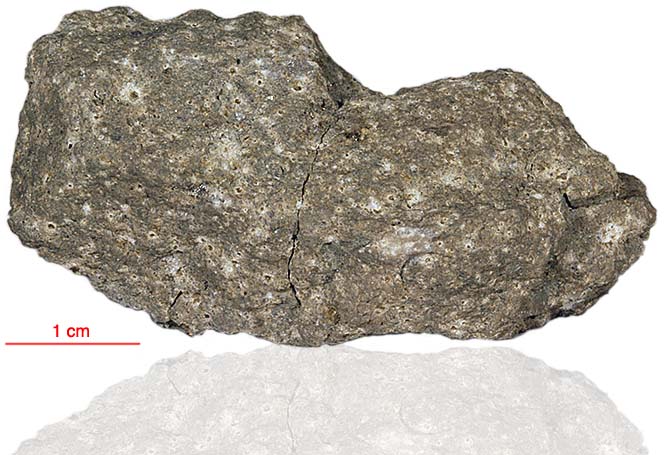
Fact sheet
72736 was collected as a rake sample. It is an impact melt rock rather typical of others found at Apollo 17. It has a matrix with a micropoikilitic texture. The matrix makes up over 70% of this sample and includes numerous plagioclase feldspar and anorthosite clasts. Grains of pink spinel have reaction coronas (see rotation 2). Rotation 1 shows a partially maskelynised plagioclase feldspar clast.
The sample weighed 28.73 grams before analysis and has not been dated.
Further details of this and other Apollo samples are here: http://curator.jsc.nasa.gov/lunar/
Apollo 17, the final manned landing mission, had two objectives: to obtain samples of ancient rocks from the lunar highlands and to look for evidence of younger volcanic activity on the valley floor.
This small Collection contains material deriving from both periods, including igneous rocks around 4.3 billion years old from the lunar highlands as well as younger volcanic samples dating from about 3.6 billion years ago.
Apollo 17 was launched on 7 December 1972.






